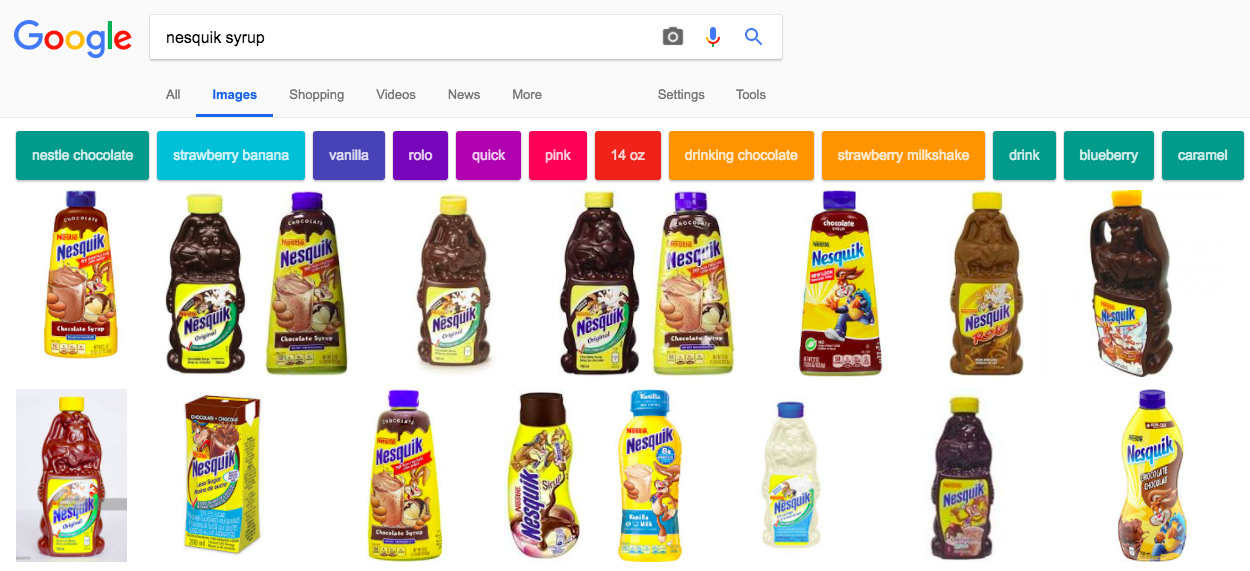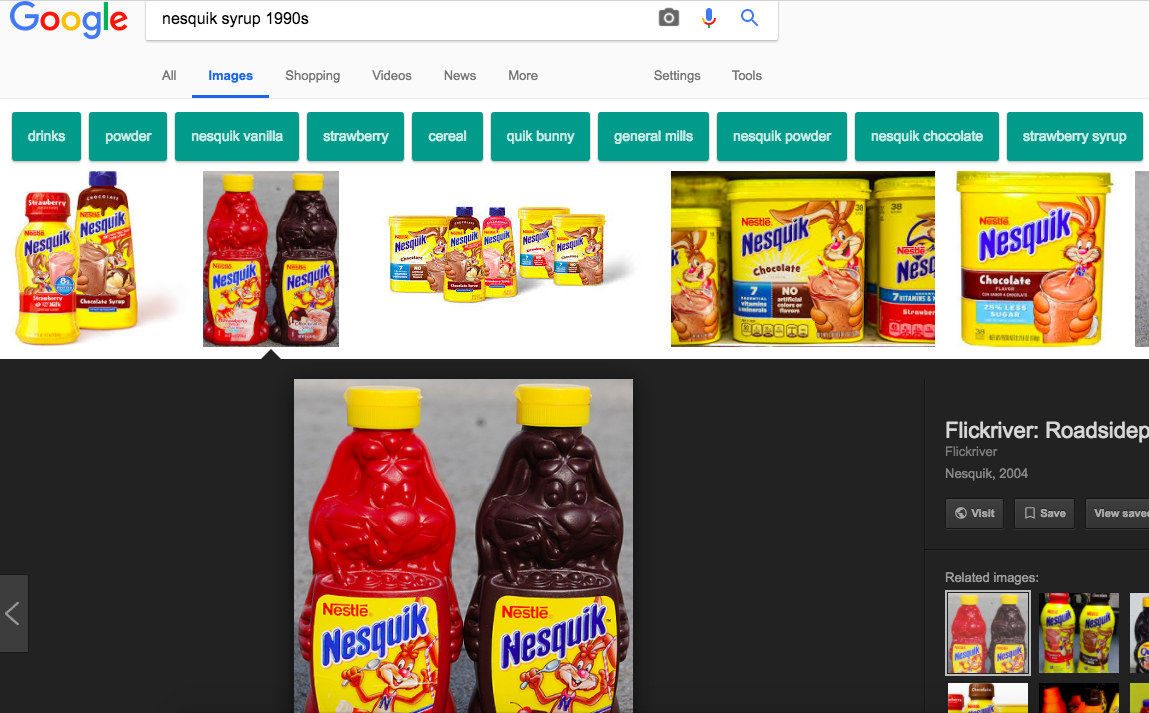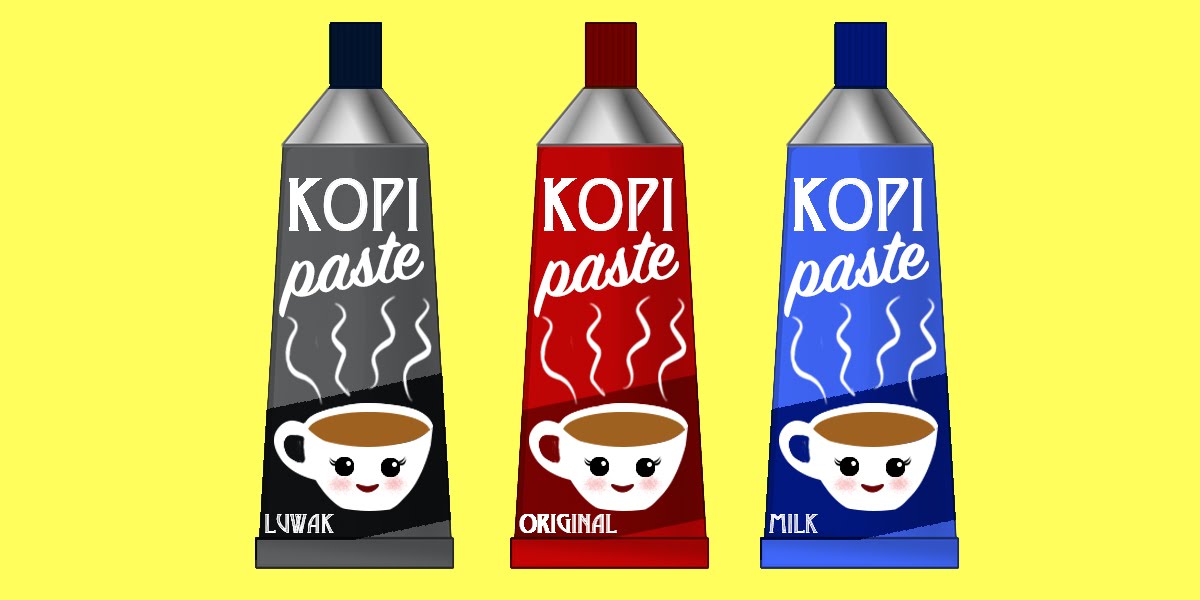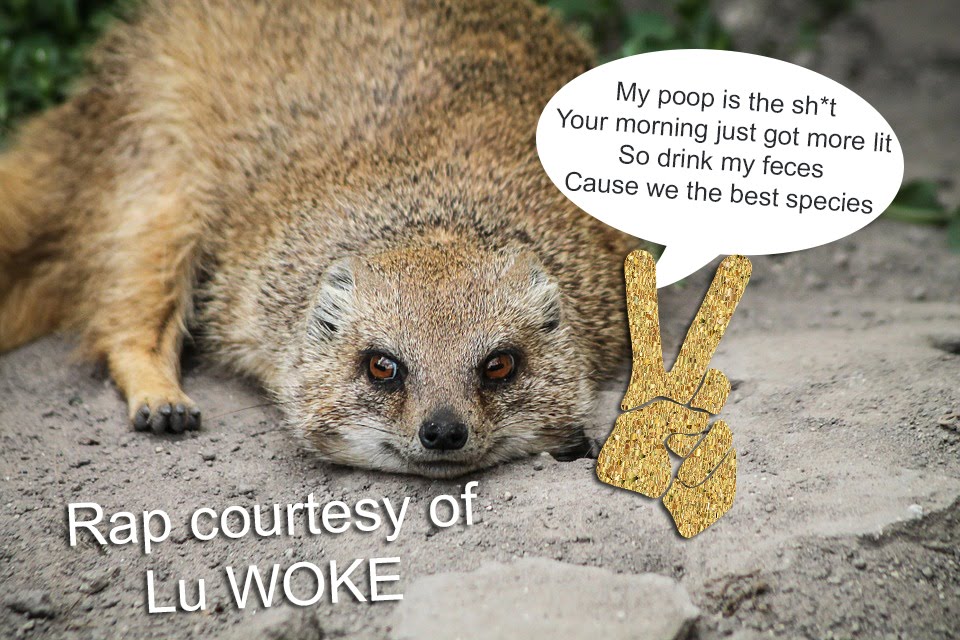kopi: Malay/Hokkien term for coffee
kopi paste: a pun on the words copy paste; instant coffee that comes in a paste/syrup form
c o n c e p t:
The concept of this product stems from childhood breakfasts with Nesquik Syrup. Nesquik syrup provided that rush of sugar needed for any child who was too young to drink coffee (being all children). If you guys don’t remember this product let me do a quick google search for you guys:

Does this trigger any memories? At first I was quite confused when I saw these, especially the ones that are smooth bodied and fully wrapped in yellow. It’s like when you look at the new SunnyD bottles. THAT IS NOT MY SUNNYD. In order to trigger the correct memories you need to perform the correct search. As such I searched the following:

Keyword: 1990s. I am getting old…NOW THESE IMAGES trigger the CORRECT memories.
You would wake up as a child ready to scoff down your cereal and squirt this sugary syrup into your milk. As a Chinese child, I’d take my chopstick and swirl it in my mug as I’d get hypnotized by the swirls #swirlsforshirls.
Now, KOPI paste will have a similar consistency as the Nesquik syrups to provide quick solvency into boiling water.
p r o d u c t:
KOPI paste is a portable coffee syrup that you can bring anywhere and everywhere to get your quick coffee fix. As long as you have a source of boiling water you can make coffee anywhere your heart desires. All you have to do is squirt a bit of this syrup into boiling water and just swirl it till it dissolves. You’ll never face the issue of espresso residue floating in your coffee as KOPI paste provides the smoothest coffee experience you’ll ever have.
I spent a semester in university on exchange in Singapore and kopi is quite the common word there. I never got a full grasp on the coffee system going on during breakfast, but I tried my best to keep up with the aunties and uncles serving me breakfast to not be flustered when ordering kopi. Now you may ask how can one be flustered while ordering coffee? You obviously have never tried to order coffee like a local in Singapore or you have never tried ordering a semi sweetened macchiato covered in almond bits with 2 pumps of hazelnut syrup and whipped cream..OH AND DON’T FORGET IT HAS TO BE SOY…at Starbucks.
In Singapore, according to wikipedia, as I don’t remember all the different types by heart..shame on me 🙁
coffee and tea are usually ordered using a specific vernacular featuring terms from different languages. “Kopi” (coffee) and “teh” (tea) can be tailored to suit the drinker’s taste by using the following suffixes when ordering:
- “Peng” (Chinese: 冰; pinyin: bīng; Pe̍h-ōe-jī: peng; literally: “ice”): with ice
- “Si”: with evaporated milk (Hainanese dialect)
- “Siew dai”: less sugar (Hockchew/Fuzhou dialect)
- “O”: black, no milk
- “Kosong” (“Nothing”): no sugar
- “kao”: extra thick
- “Poh”: extra thin
So now you see the dilemma I faced while on exchange…
~*flashback to exchange*~
Young, innocent Shirley: “Can I h-h-h-ave”
Uncle at the stall: “Faster, faster lah”
Scared, young, innocent Shirley: “Kopi O?”
Uncle at the stall: “You want the kopi O leh?”
Sweating, scared, young, innocent Shirley: “Yes Uncle”
~*cut back to the blog post*~
KOPI paste will have a variation of flavours to satisfy all your coffee needs:

- Original, which is just black coffee
- Milk
- Luwak
- and others
Now you may be asking, “Shirley what is Luwak? That sounds soooooo exoticccccCCcc”
Let me tell you what luwak is. It is coffee beans that have passed through the digestive system of the cutest little creature, the asian palm civet also known as a luwak. The luwaks only eat the best coffee beans and as such, the leftover residue in their poop is premium quality coffee beans. This coffee is a true delicacy and as such the pricing would reflect its premium status. The following is prominent rapper in the luwak community, Lu WOKE’s rap/testimony dedicated to this premium taste:

a d v e r t i s i n g:
Just imagine the ads for this. We’d want to market the portability of this coffee so we can start off with an array of different scenes of different people reaching into their bags, women with their purses, men with their messenger bags, students and their backpacks. We would have a repetitive techno like jingle that would just be “kopi, paste, kopi, paste.” Each time the jingle would alternate between the words, kopi and paste, a new action would be done. Starting with a sequence of people taking out the product, to them holding the product, to the squeezing of the product, the swirling, and finally the satisfactory gulp.
tagline:
“Just copy paste”
